
We might not normally think of barns as hotbeds for innovation, but in Dayton we have one with major significance to the world of manufacturing. Built in 1904, the Deeds Barn was originally located at 319 Central Ave in Dayton View behind the house of Edward and Edith Deeds.
The barn is where Deeds, a manager at NCR, his colleague Charles Kettering, and other friends began tinkering on projects that would lead to the invention of the electric ignition and the self-starter, which put an end to the days where you had to start a car with a hand crank. They formed Delco and turned it into an industrial behemoth which expanded far beyond the humble barn workshop.
A 3/4 scale replica of the barn was built at Carillon Historical Park in 1949, a year before the park first opened to the public.
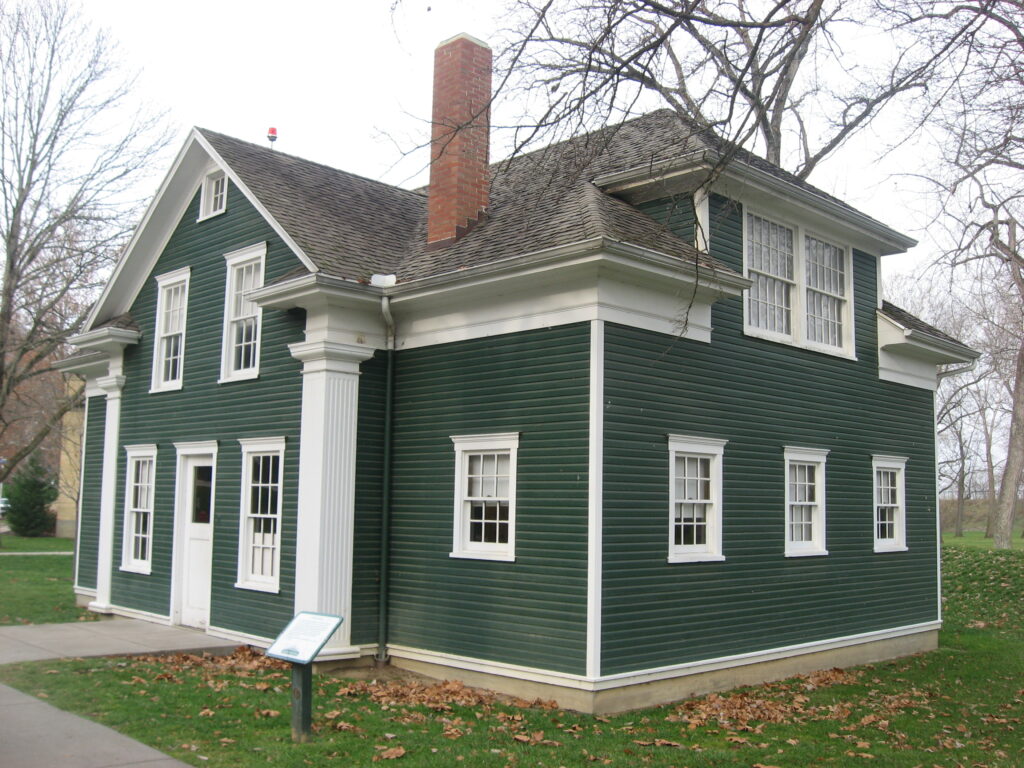
For decades it was one of the signature attractions, but some visitors are unaware that the original barn is located at the park too.
It can be found inside in the Heritage Center of Dayton Manufacturing and Entrepreneurship, and with all the attractions around you it’s possible to walk straight inside the barn without even realizing you’ve done so.
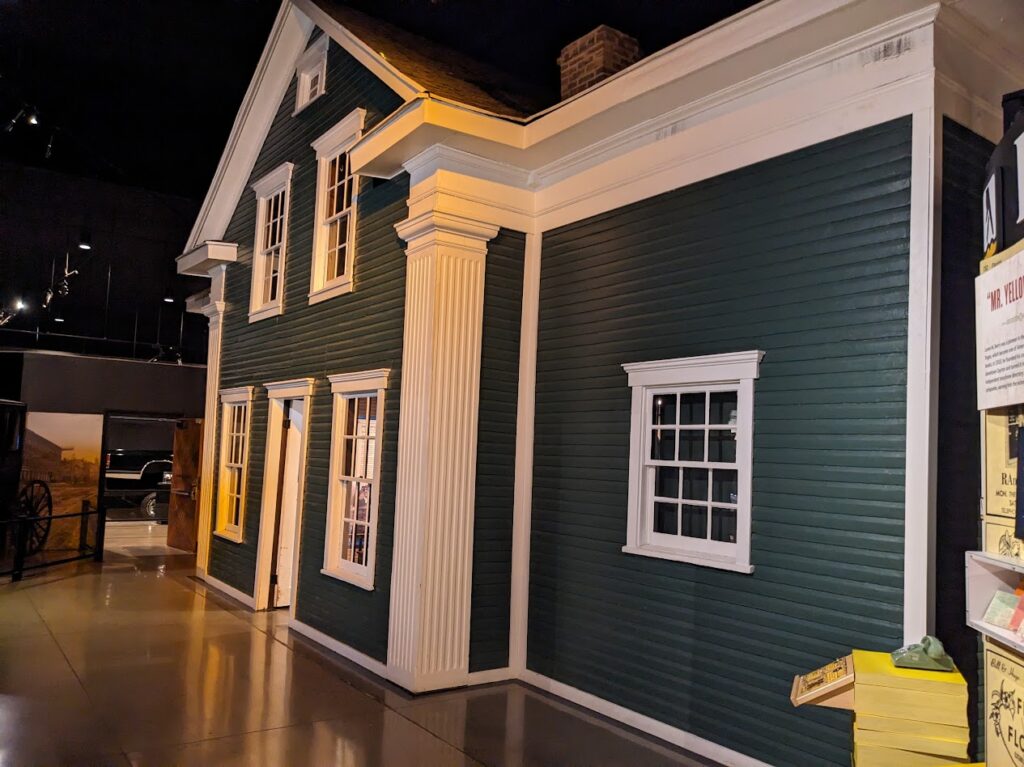
The story of this original barn is long and convoluted as it was moved from its Central Ave location to save it from the wrecking crew, but an even greater demolition threat occurred after it was moved for the first time.
In 1962, the barn’s location on Central Ave was in the way of a planned apartment house and was set to be razed. A local company, Jones Wrecking and Excavating, already had a contract to demolish it.
But realtor H. L. Weis of Horrell Realty announced he would purchase the structure and move it to a new location. Unfortunately, the publicity of Weis’s intentions served to raise the price of the barn significantly, “from $1,500 to over $4,000 in less than one week” (Dayton Daily News 8/7/62).
Weis said that the Hugh C. Jones of the Jones company hasn’t previously known that the building was historically significant. Weis was unable to match the asking price, but “a ‘crash’ campaign by the Kettering historical society, supported by Dayton and Kettering businessmen” persuaded Jones to deed the barn to the newly-formed society.
At the time, one article opined that “it is ironic that Dayton has a popular replica of the old barn at Carillon park, while little interest has been shown in the genuine article” (Dayton Daily News 8/5/62).
And indeed before the Kettering closed, Dayton City Commission considered “a citizen’s offer to buy the barn if the commissioners could come up with a Dayton site,” but commission noted that significant money would be needed for restoration, and pointed out that Deeds had the replica built in Carillon Park rather than moving the original structure. Mayor Frank R. Somers said “I think Colonel Deeds himself actually made the decision for us” (Dayton Daily News 8/16/62).
After it was deeded to the Kettering group, the barn was dismantled into three pieces for the move to its new location in Prugh Park, a 15-acre section of the old Prugh farm near Dorothy Lane and Woodman Drive which had just been purchased by the city of Kettering. A $10,000 goal was set for the move and the restoration of the structure.
As of August 25, $4,000 of that sum was still needed but it was eventually raised, and officials planned for the barn to be opened as a museum. It eventually would, but only after a wait that was much longer than anyone could have anticipated.
The sections of the barn were moved to Prugh Park, but before they could be reassembled, vandals “rip(ped) up” the barn and “left (it) in shambles” as “windows were broken, window frames and other objects ripped out, and stones and mud thrown inside.”
Paul Drake, president of the Kettering Historical Society called it “tragic” and said that the $10,000 raised was already spent and “I don’t know where we could get the money to fix it.” At the time he called the project to reassemble the barn “up in the air” and appealed to the public for support in raising funds.
Work slowly progressed the following year, but work “ground to a halt” in fall of 1963 when the society ran out of money and the city was unable to contribute funds at the time. By May 1964, it was called a “decaying barn” that “appears near death today for want of interest.” (Dayton Daily News 5/1/64) It got a temporary reprieve later that month with a $1,000 guarantee to secure it until additional funds were raised for a full repair.
But a series of fund drives did not raise as much as was hoped, and by 1968 the barn had become “an object of neighborhood criticism and complaints because of its still-rundown appearance.”
By 1969, the Kettering museum began to consider alternative sites for the structure, which included “several out-of-town locations” that were “interested in acquiring the building, but (the society president) wouldn’t name them.”
A big win came in 1972 when the Kettering Jaycees donated $6,094 that they had raised at “a haunted house attraction” which would be used for repairs and for the barn’s move to the Kettering museum’s new headquarters at 35 Moraine Circle.
Some still griped that the barn had been moved out of Dayton to Kettering, but when the new Kettering-Moraine museum opened, president Melba Hunt made the case for why the two south suburbs made sense to tell these stories, saying that “much of the nation’s industry got its start in the south of Dayton area beginning back in World War 1 days” and “the historical background of our area has never been fully brought out to the public.”
Hunt expanded on the history of a second company formed after the Delco duo had moved out of the Deeds Barn: “Kettering and Deeds formed the Domestic Engineering Company in 1915 to produce the Delco light, a farm lighting apparatus. That company was the forerunner of Frigidaire. In 1917 they incorporated the Dayton Wright Airplane Co and the Delco Light building was enlarged and became known as Ohio’s largest industrial structure. (Note: The complex later became GM’s Moraine Assembly plant and currently Fuyao.) Dayton Wright built America’s first war combat plane to see duty in World War 1. In 1919, Kettering started General Motors’ first research laboratory in the building.”
“We aren’t trying to steal them” she concluded. “Kettering has a legitimate claim.” (Dayton Daily News 1/31/73).
The barn was dedicated on August 29, 1976 “with the sprawling Frigidaire division of General Motors as a backdrop” and state government and business leaders as well as relatives of Deeds and Kettering in attendance. The date would have been Kettering’s 100th birthday.
The barn would stay there until 2008, when the Kettering-Moraine Historical Society board voted to transfer its assets and buildings (including the Deeds Barn) to Dayton History which would move them to Carillon Park.
Dayton History had spent two years evaluating the Kettering-Moraine museum and determined that the move made sense, both physically with the structures and in terms of the stories being told at both museums. The Deeds Barn was moved in 2009, and the Heritage Center opened two years after that.
So it’s positive that we have a happy ending for the original barn as well as the 3/4 scale replica, but the most important site in the story of the barn, its original location on Central Ave, is today an empty lot.
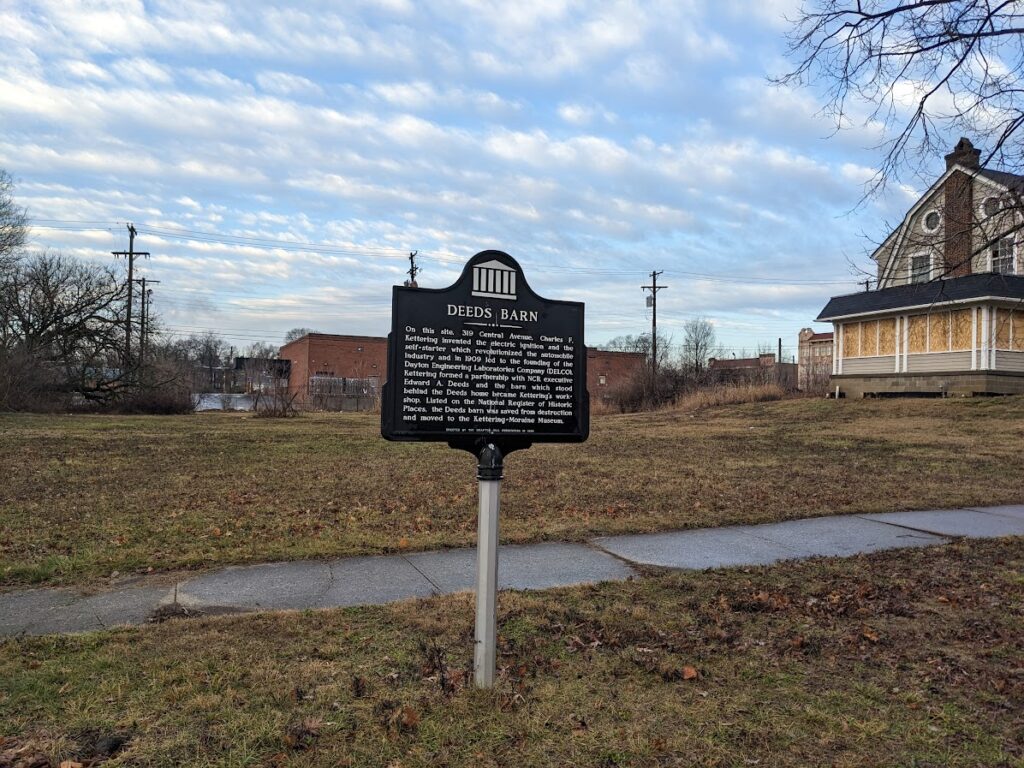
One local preservationist, however, hopes to change that. Dan Barton, who has played a major role in previous historic preservation projects in the Grafton Hill neighborhood, has proposed reconstructing the Deeds home and barn where they once stood.
The goal would not be to create yet another museum to tell stories of the past, but rather to bring back a significant piece of the lost historic district while providing much-needed housing units in the house and barn.
Barton’s project has earned the support of local organizations including the neighborhood association and Preservation Dayton, but obtaining key federal and state historic tax credits is proving to be a bigger challenge.
As Barton explains, reconstruction has been a major part of the federal historic preservation directive since its inception, but later lost support as a treatment for historic properties in favor of preserving, rehabilitating, and restoring still-standing structures.
He is working to demonstrate the importance of reconstruction projects as a viable option for preservation that is supported by the applicable Federal law. The hope is that the National Park Service and State Historic Preservation Office will rethink their current tax credit policies, and allow for lost historical assets like the Deeds Barn to return to their often forgotten and underutilized original homes.
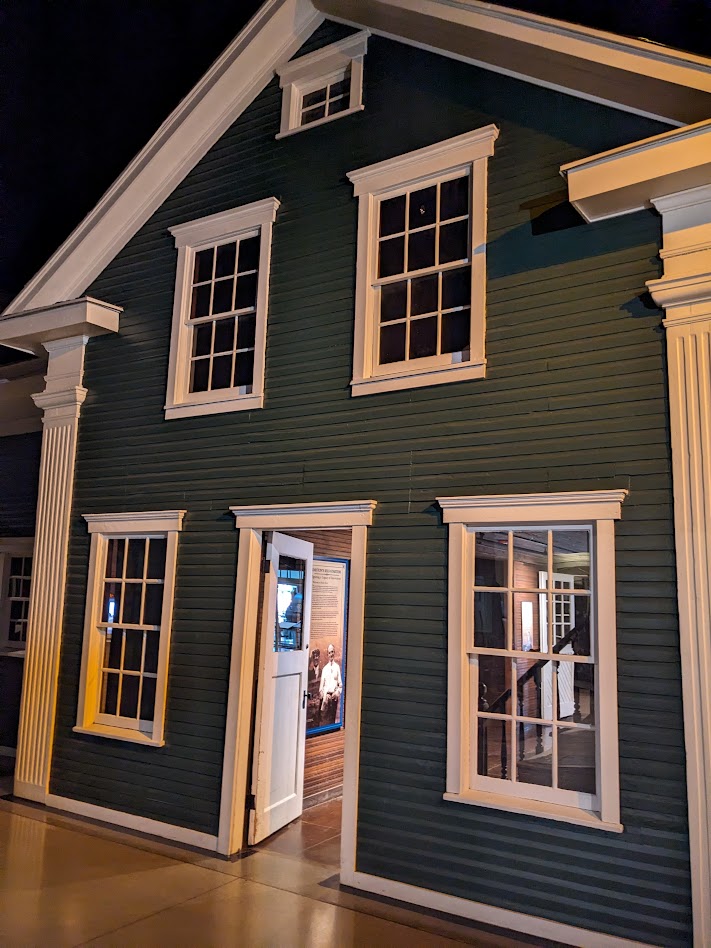
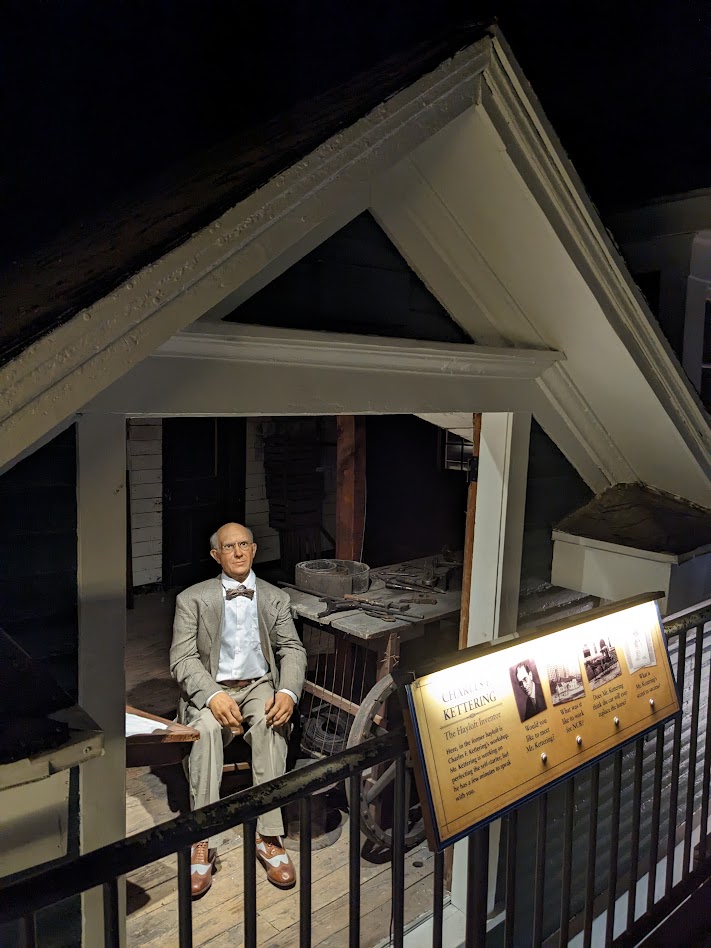
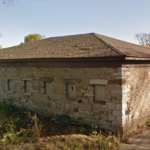

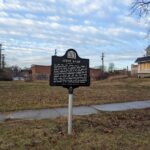

Did you ever see the video on YouTube that shows when the Deeds Barn and the other buildings were moved from behind the old Fairmont East area down Stroop Rd to the Kettering Moraine site.
Thanks for this very interesting and thorough historical read, Andrew. Thank you! Up until now, I didn’t know (or recall) that the replica of Deeds Barn at Carillon Park was 3/4 scale! I am so glad that the restored original barn is now protected inside the Heritage Center at Carillon Park, too. Dayton History does a great job. The changes and expansion at Carillon Park over the recent years is so impressive.